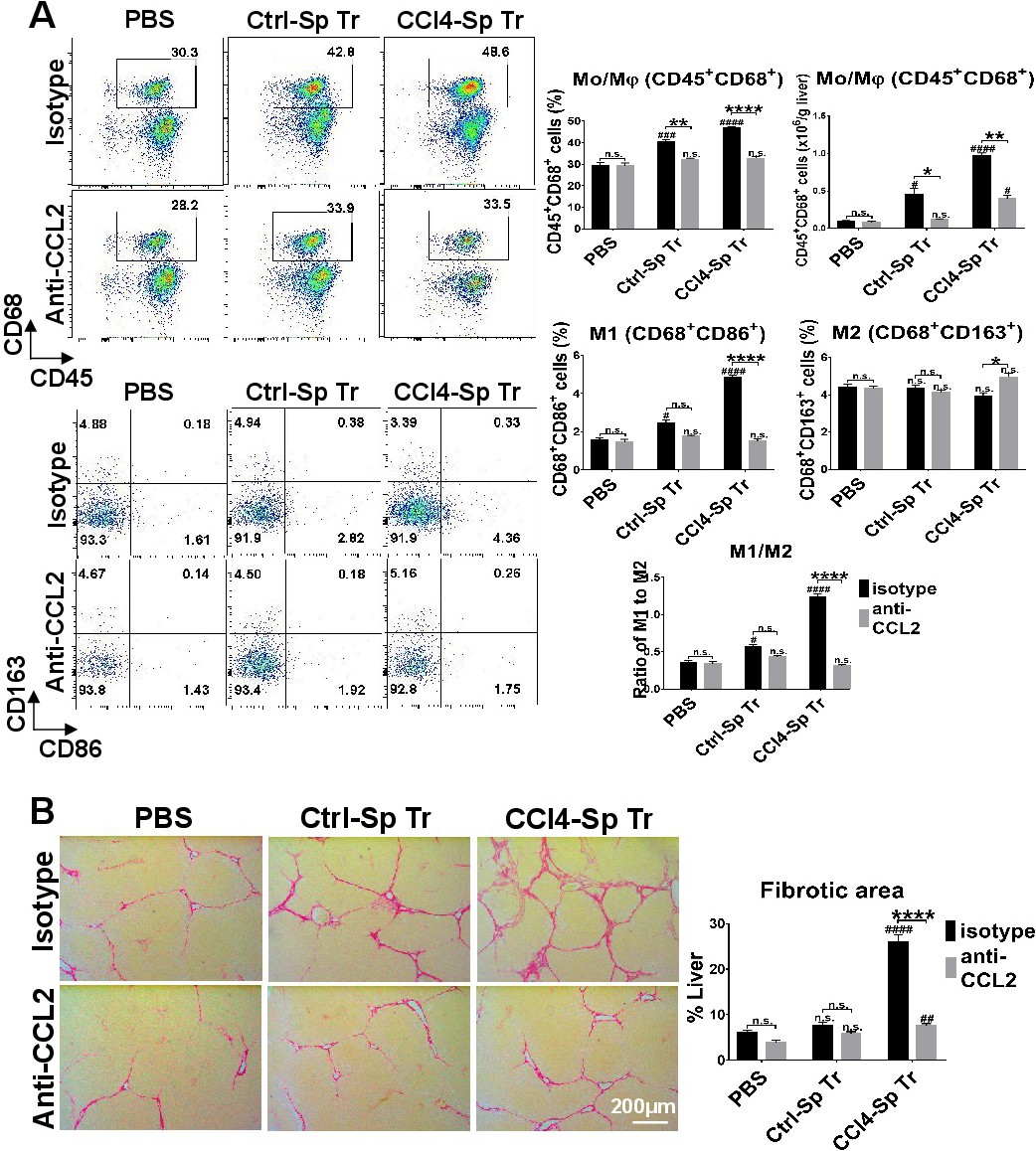Fig. 6. Fibrotic donor splenocyte transfer to splenectomized recipients partially restores the M1-dominant hepatic macrophage phenotype and promotes fibrosis. (A) Carbon tetrachloride (CCl4)-induced fibrotic rats underwent splenectomy or sham operation 24 h after the eighth CCl4 injection, and received donor splenocytes with the administration of CCL2-neutralizing antibody or isotype control 72 h after Spx or sham operation, and euthanized 72 h after the last (12th) injection of CCl4. The percentages and absolute numbers of hepatic monocytes/macrophages (CD45+CD68+) were analyzed. The percentage of M1-like (CD68+CD86+) and M2-like (CD68+CD163+) macrophages and the ratio of M1 to M2 were determined. (B) Liver sections were stained with Sirius red and the proportion of fibrotic areas in liver sections quantified. Magnification: ×50; scale bar: 200 µm. Statistics: two-way ANOVA (n = 5 in each group). *P<0.05, **P<0.01, ***P<0.001, ****P<0.0001, anti-CCL2 group vs. isotype group. #P<0.05, ##P<0.01, ###P<0.001, ####P<0.0001, Ctrl- or CCl4-Sp Tr vs. PBS. Abbreviations: Sp-Tr, adoptive transfer of splenocytes; PBS, phosphate-buffered saline.
